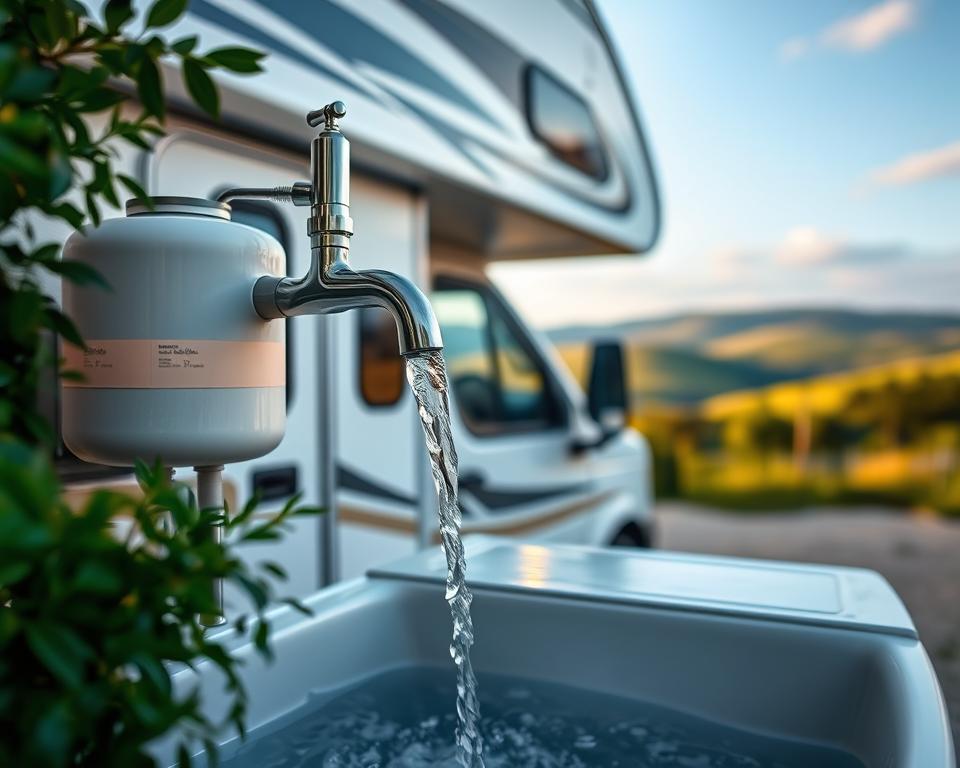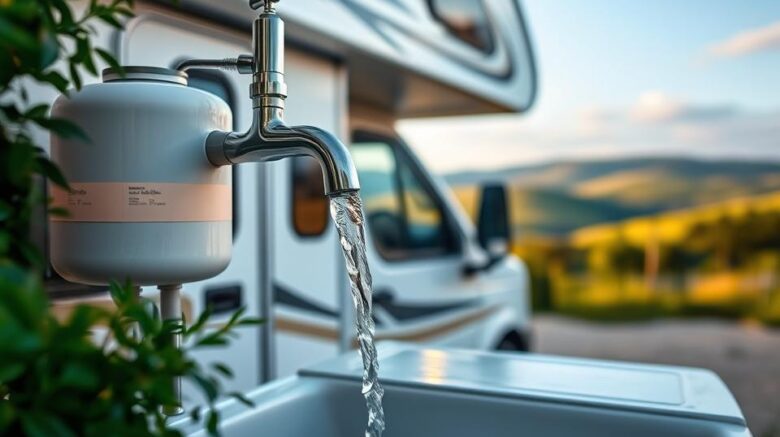RV Sewage Tank Pumping: Key Upkeep Guidelines
Think about the fallout from overlooking your RV’s septic system. A lot of motorhome owners dread tank emptying. Yet, recognizing the need for regular servicing is crucial. These steps preserve your camping joy and avoid expensive repairs. Learning proper waste disposal is key to your septic health. We’ll share vital insights on RV septic service near me, including best practices and tips to keep your system running smoothly.
Getting to Know Your RV’s Waste Setup
All RVs come with a built-in waste management system. The system comprises a black water tank (toilet), a gray water tank (sinks/showers), and a fresh water tank. Knowing these components prevents clogs and ensures efficient cleaning.
A series of drain lines and vent pipes balance waste flow and airflow. A good grasp prevents clogs and nasty odors. This knowledge ensures hassle-free trips and reliable waste handling.
Maintaining clear, working tanks requires routine effort. Monitoring fill levels and dumping when needed keeps odors at bay. Proper upkeep extends tank life and enhances every journey.
Why Routine Tank Pumping Matters
Routine sewage draining preserves functionality and hygiene. Waste buildup triggers odors and backups that ruin outings. A full tank can produce embarrassing backups. These incidents mar your travel enjoyment.
Neglecting tank emptying invites expensive fixes. Damage from neglect can shorten component lifespan. Timely emptying keeps your plumbing running smoothly. It prevents unwelcome surprises and roadside emergencies.
Proactive servicing stops clogs. Dedicating effort to pumping reflects good RV stewardship. Your trips become more relaxing. A strict pumping routine lets you enjoy camping without septic concerns.
Finding the Right Dump Frequency
Determining dump intervals needs careful thought. Generally, dump every 3–5 days when in use. However, it shifts based on tank volume and number of users. Pinpointing the correct dump time is key for effective wastewater management.
Dump the black tank at about two-thirds capacity. This prevents solids from clogging and keeps flow steady. Ignoring it can cause backups and unpleasant odors.
Various factors influence dump frequency, such as
- Number of people on board
- Length of stay
- Type of waste generated
- Tank capacity
Scheduling prevents on-the-road crises. Sync with any public dump station hours. Tracking your usage helps forecast dump needs.
| Usage Scenario | Pumping Frequency |
|---|---|
| Short Trip, Two Campers | Every 3–4 days |
| Extended Trip (4–6 people) | Every 2–3 days |
| Seasonal Living (2–4 people) | Weekly or Bi-Weekly |
Monitor fill levels and usage patterns. This proactive stance ensures enjoyable travel.

Top Methods for Emptying Your Tanks
Proper methods stop odors, clogs, and expensive repairs. Begin with the black tank to avoid cross-contamination. It keeps gray water from mixing with solids.
A sturdy sewer hose reduces spill chances and aids flow. Tighten connections to stop spills. After emptying, flush the black tank with plenty of water. This removes residue and preps the tank for next time.
Know where dump stations are located. Being prepared saves time on the road.
In short, follow these key steps for efficient dumping:
- Empty the black water tank first.
- Use a top-quality sewer hose.
- Flush the black tank thoroughly after emptying.
- Plan your dump station locations.
These tips refine your waste disposal process.
Tank Handling and Upkeep Best Practices
Knowing proper tank use and maintenance is crucial. Keep some water in the black tank for better breakdown.
Refrain from disposing non-biodegradable items. Use only RV-compatible paper. Inspect tanks often to catch problems early.
Adding treatments now and then improves septic service. These products balance enzymes and bacteria for efficient decomposition. Simple steps ensure smooth tank operation.
- Check for leaks and damage often.
- Apply RV-specific chemical treatments.
- Keep vents clear to avoid odors.
Adhering to these practices safeguards your system. You’ll enjoy more worry-free trips.
Essential Pumping Tips
To pump your tank effectively, follow a methodical approach. Proper disposal prevents issues—only dump at approved stations. Know your tank’s capacity to avoid overflows.
Monitoring levels guides your dump schedule. Routine scheduling preserves your septic system and travel enjoyment. A planned maintenance routine keeps everything running smoothly.
Flush well after every emptying. This clears residue for more efficient future pump-outs. By applying these strategies, you’ll maintain your RV’s condition and comfort.
Avoid These Septic System Errors
Maintaining your system is vital for uninterrupted camping. Not using enough water in the black tank leads to buildup. Proper flushing dissolves waste better.
Flushing inappropriate items blocks pipes. Avoid non-dissolvable products like feminine hygiene items. Such mistakes can damage plumbing and inflate repair bills.
Leaving the black valve open too early is a mistake. Premature opening prevents a full flush. Only open when ready to empty for a complete clean.
Awareness of these errors boosts system longevity. Avoiding them keeps your waste management reliable.
When to Call in Professional RV Waste Disposal Services
Recognizing the need for expert help extends tank life. Persistent odors often indicate complex issues. Slow drains point to potential clogs or buildup.
Visible residue at dump points requires attention. It often calls for a deep professional clean. Pros blast away blockages to restore smooth flow.
Routine professional inspections catch hidden issues early. Acting on findings quickly prevents bigger problems. Professional service ensures proper functionality.
Long-Term Maintenance for Your RV Wastewater Management
Smart upkeep ensures lasting system performance. Regular pumping boosts system life and function. Flushing often prevents buildup and costly repairs.
Adopting sanitation routines protects your system. Checking seals and joints avoids leaks. Opting for biodegradable products protects plumbing.
Consider these long-term practices:
- Stick to a pump-out timetable.
- Rinse often to remove solids.
- Sanitize twice a year.
- Inspect parts frequently for wear and tear.
Investing in prevention brings peace of mind. Routine service lets you focus on the scenery, not your sewer.
Wrapping It Up
Good septic care ensures enjoyable trips. Understanding operation and following guidelines prevents headaches. Routine black tank dumping boosts performance. It enhances every mile.
By regularly checking and properly caring for your septic setup, you’ll ensure worry-free travel. This reliability supports every outing. These routines prime your rig for future rides. So you can focus on making memories, not dealing with tanks.
